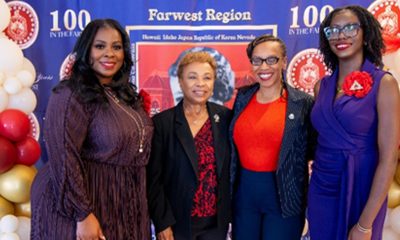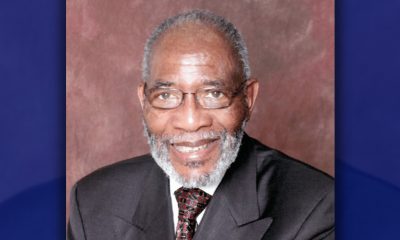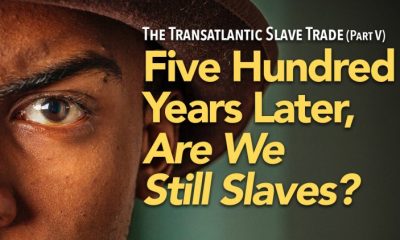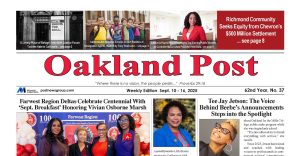Bay Area
‘Freedom Movement – a Musical’ Depicts The Mississippi ‘Freedom Summer’ of 1964
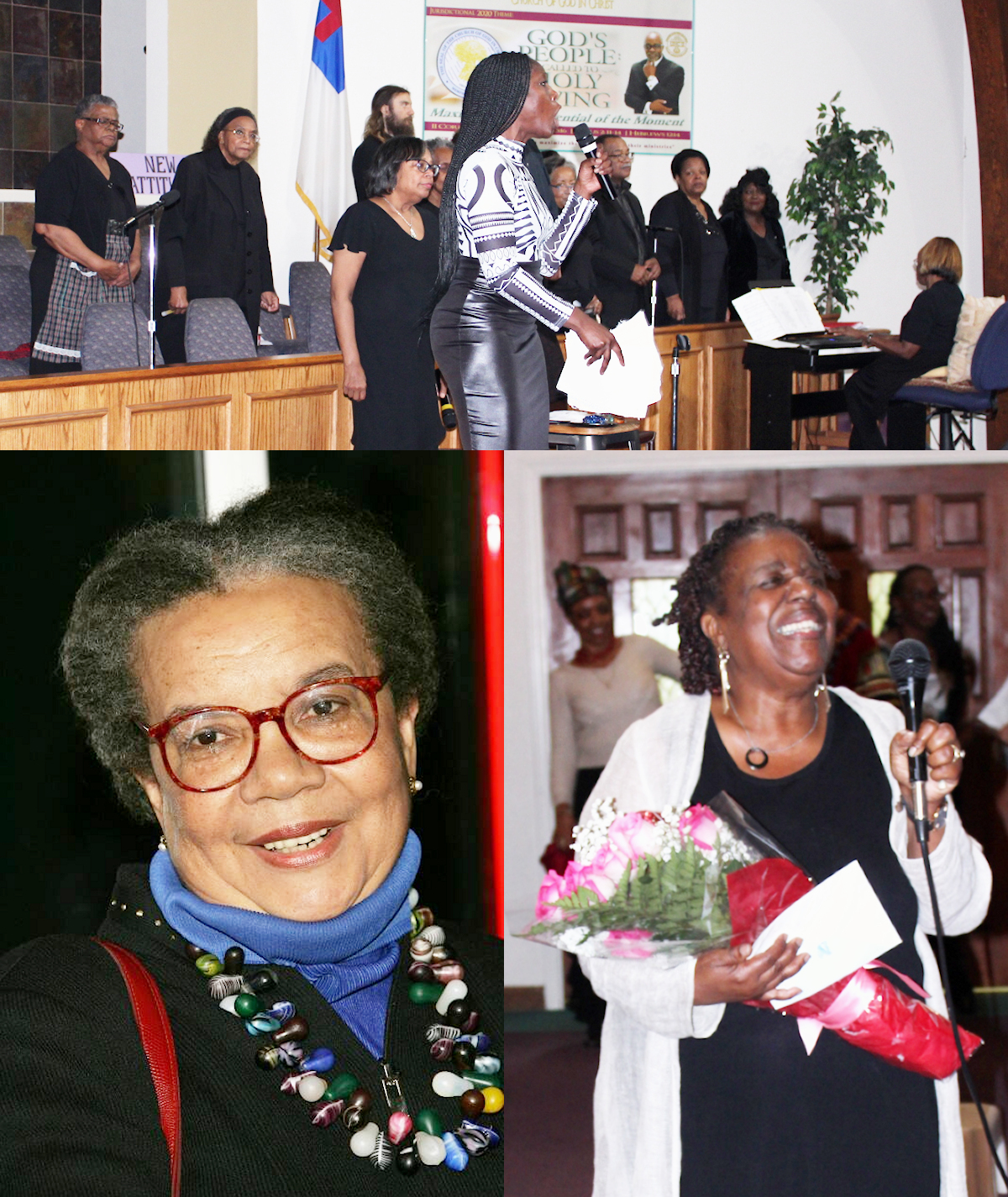
In 1964, “Freedom Summer” or the Mississippi Summer Project, was a voter registration drive aimed to increase the number of Black voters in Mississippi.
On Feb. 8th, “Freedom Movement – A Musical”, was performed at the Cornerstone Community Church in Marin City as a fundraiser for the Hannah Freedom School. It brought the audience back to 1964 when racism in the South was intense, and the civil rights movement was active in Mississippi.
Bettie Hodges Shelmire, Executive Director of the Hannah Freedom School, says that the school’s genesis came from the Civil Rights Movement in the Mississippi Summer of 1964.
Racial violence against Blacks was intense, as Blacks were not only lynched but many Black churches and homes in Birmingham, Alabama, were bombed, including the 16th Street Baptist Church on Sept. 15, 1963, where four girls were killed and several other people were injured.
Only 6.7 percent of eligible blacks were registered to vote in Mississippi in 1964. In response, Congress began to pass important new civil rights legislation, including the Civil Rights Act of 1964.
Shelmire says that less than 5% of Black people in the South voted, even though they were given the right to vote by the 15th amendment.
Approximately 800 mostly white volunteers, originating from the then Western College for Women in Oxford, Ohio, joined the African Americans in Mississippi to fight against voter intimidation and discrimination at the polls. The Congress on Racial Equality (CORE) and the Student Non-Violent Coordinating Committee (SNCC) organized the movement.
The volunteers started Freedom Schools to counter “sharecropper education” received by the Black people and poor whites, who through reading, writing and arithmetic, history and civics, could learn to participate in the voting process.
Freedom Schools were eventually adopted by Marian Wright Edelman, founder and president emerita of the Children’s Defense Fund (CDF). According to childrendefense.org, Edelman advocated for disadvantaged Americans her entire professional life. Under her leadership, CDF has become the nation’s strongest voice for children and families. The CDF’s Leave No Child Behind® mission is to ensure every child a healthy start, a head start, a fair start, a safe start, and a moral start in life and successful passage to adulthood with the help of caring families and communities.
There are 185 CDF Freedom Schools, which include the Hannah Freedom School in Marin City.
The office address for the Hannah Freedom School is 825 Drake Avenue, Marin City, CA 94965. Their mailing address is 3001 Bridgeway, #422, Sausalito, CA 94965. For more information, please call (415) 887-9740.
Bay Area
California Leaders Mourn John Burton, Trailblazing Democratic Powerhouse Dead at 92
Gov. Gavin Newsom honored his legacy: “There was no greater champion for the poor, the bullied, the disabled, and forgotten Californians than John Burton. He was a towering figure — a legendary force whose decades of service shaped our state and our politics for the better.”
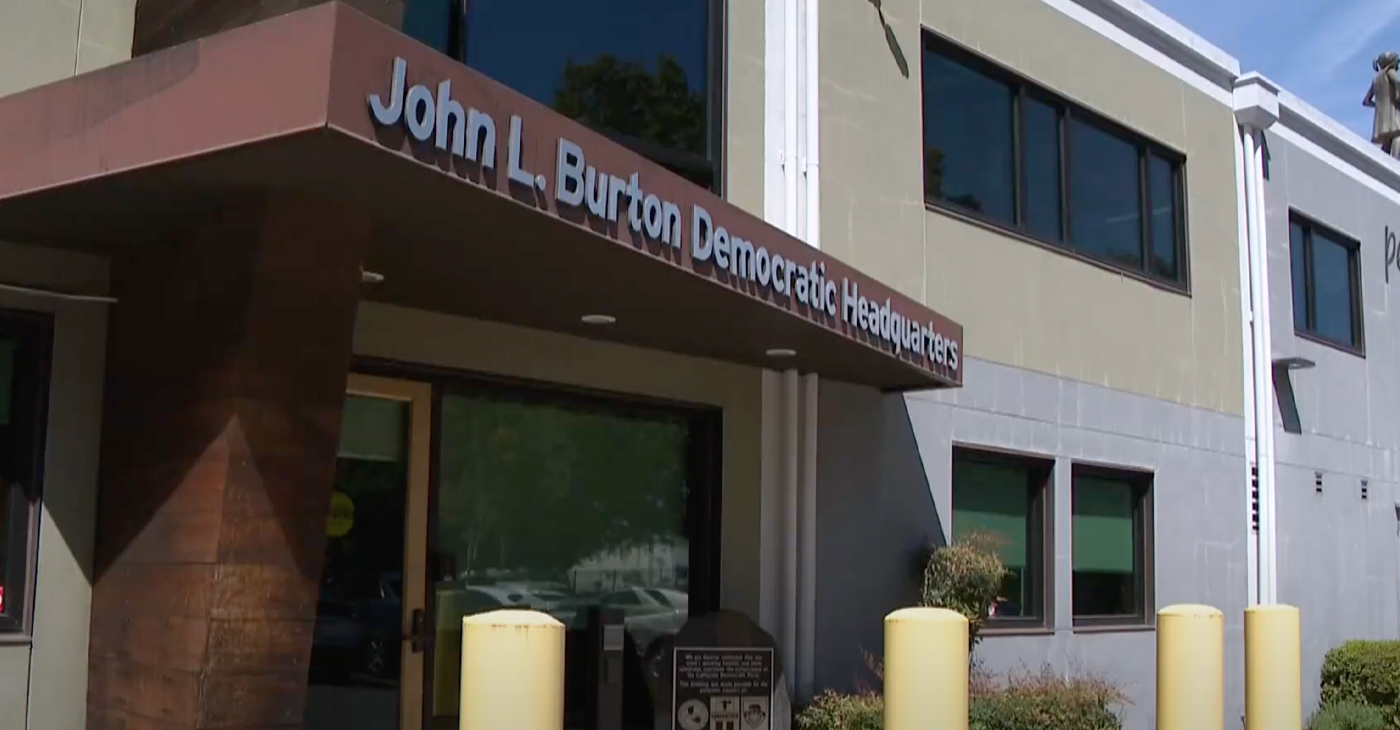
By Bo Tefu, California Black Media
John Lowell Burton, an influential figure in California politics who served as State Assemblymember, U.S. Congressman, President pro Tempore of the State Senate, and Chair of the California Democratic Party, passed away of natural causes on Sept. 7.
Burton was 92.
Gov. Gavin Newsom honored his legacy: “There was no greater champion for the poor, the bullied, the disabled, and forgotten Californians than John Burton. He was a towering figure — a legendary force whose decades of service shaped our state and our politics for the better.”
Oakland Mayor Barbara Lee, a longtime friend, reflected on Burton’s determination.
“His life’s work reminds us that authentic leadership means having the courage to speak truth to power and never forgetting where you came from,” Lee said.
Sen. Alex Padilla (D-Calif.) said Burton was a guiding light and fierce defender of justice.
“John was a mentor to countless progressive leaders across California, including me,” said Padilla. “I’ll always be grateful for his counsel over our breakfasts at Delancey Street Restaurant in San Francisco, surrounded by residents working to rebuild their lives.”
Lt. Gov. Eleni Kounalakis also paid tribute to Burton.
“John Burton left an indelible mark not only on California, but on all of us who were inspired by his example. He showed us what it means to lead with courage, to fight for the voiceless, and to speak truth without fear,” said Kounalakis.
Burton’s decades in office were marked by passionate advocacy for civil rights, environmental protection, education, healthcare, and foster youth. He overcame personal struggles — including addressing addiction in the 1980s — and returned to public service with renewed purpose. His work reshaped California’s political landscape and inspired generations of leaders.
U.S. House of Representatives Speaker Emerita Nancy Pelosi (D-CA-11) remembered her friend.
“Today, working families have lost one of the most outspoken, ferocious and unyielding champions our nation has ever known,” said Pelosi in a statement, adding that Burton “was a progressive warrior and dear friend whose big heart, sharp mind and boundless fight for justice shaped California and America.”
According to Newsom and first partner Jennifer Siebel Newsom, Burton will be posthumously inducted into the California Hall of Fame and flags will be flown at half-staff in his honor.
Arts and Culture
Farwest Region Deltas Celebrate Centennial With “September Breakfast” Honoring Vivian Osborne Marsh
The region was established in 1925 under the leadership of Vivian Osborne Marsh, who became its first Regional Director. Marsh was a pioneering scholar and civic leader, earning recognition as the first Black woman to receive both a bachelor’s and a master’s degree in anthropology from UC Berkeley.

By Antoinette Porter
Hundreds of members of Delta Sigma Theta Sorority, Inc., and their guests gathered at the Martin Luther King Jr. Student Union at the University of California, Berkeley, to mark the 100th anniversary of the sorority’s Farwest Region.
The region was established in 1925 under the leadership of Vivian Osborne Marsh, who became its first Regional Director. Marsh was a pioneering scholar and civic leader, earning recognition as the first Black woman to receive both a bachelor’s and a master’s degree in anthropology from UC Berkeley.
Marsh went on to serve as Delta Sigma Theta’s 7th National President, where she launched the sorority’s National Library Project to expand access to books in underserved Black communities in the South. During her presidency, the organization also became a prominent voice in the civil rights movement, lobbying Congress to pass anti-lynching legislation.
Bak in the Bay Area, Marsh devoted her career to advancing educational opportunities, mentoring young people, and strengthening community life. That commitment continues to shape the region, which supports initiatives in education, social justice, and economic development. Current projects include raising scholarship funds for students at Historically Black Colleges and Universities, voter education campaigns, and health and wellness programs.
A century after its founding, the Farwest Region of Delta Sigma Theta remains active across California and other western states, carrying forward Marsh’s vision of service and advocacy.
Activism
Richmond Community Leaders Advocate for Accountability and Equity in Chevron Settlement Funds
“Now is the time for our community to have funding to solve the many problems that have been created over time,” said community advocate Antwon Cloird. “We now have no time to see politicians and the system get paid, while our community, year after year gets played.”
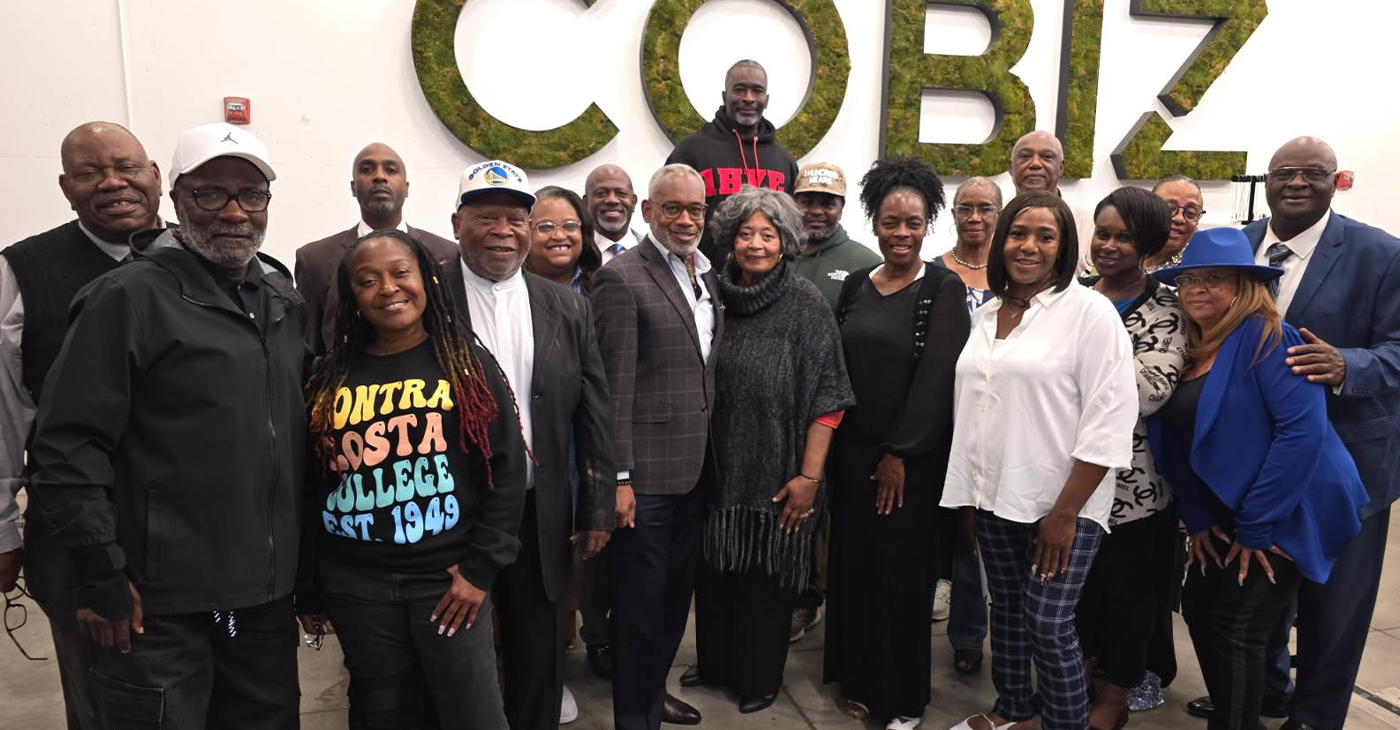
By Carla Thomas
Richmond’s historic $550 million settlement with Chevron is considered a major victory by local officials, environmental justice advocates, and union representatives to remedy the harm caused by the refinery’s long-term air pollution in the city.
However, still unresolved is how the money will be allocated to reach community members who need the most support.
“Now is the time for our community to have funding to solve the many problems that have been created over time,” said community advocate Antwon Cloird. “We now have no time to see politicians and the system get paid, while our community, year after year gets played.”
Cloird says he has formed a new coalition of 25 long-term residents who are all professionals and contributors to the community. Along with his newly formed group, which held a meeting at CoBiz, he demands transparency, equity, and fairness in the distribution of the settlement funds.
Cloird says the city wants to hire a consultant for $1.5 million to assess the Black community’s needs.
But Cloird says Black communities in Richmond have undergone so many rounds of gentrification abuse that an assessment is wasted money and time on reparations that can be more clearly defined by community members.
Cloird is outraged by the City of Richmond’s history of harm toward its Black community. Since the 1980s, the community has suffered from racism, redlining, gentrification, and marginalization, he said, arguing that the manipulation of the city’s finances has sidelined the Black community for too long.
Cloird’s career and life experiences have led him to share how the Crack Epidemic, the prison to pipeline syndrome, and the many ways systemic racism has forced an outmigration of the City’s Black community to the more northern suburbs of Pittsburgh and Antioch, which are connected to the mismanagement of city funds and the marginalization of several Black neighborhoods in Richmond.
Mayor Eduardo Martinez has proposed plans to rectify city finances and expand public services. He says the money will be placed into the city’s general fund and be allocated through open budget meetings, with public participation.
Council members Claudia Jimenez, Doria Robinson, and Sue Wilson support using the settlement to transform the city’s finances and redirect millions in annual pension payments toward services like safety, road repairs, and staffing.
Local advocacy groups, including the Asian Pacific Environmental Network (APEN) and Communities for a Better Environment (CBE), had rallied for the now-rescinded “Make Polluters Pay” measure, but are now focusing on environmental justice and investment in community-led programs.
At present, residents and organizers remain cautious, wanting to ensure the funds are fairly allocated while Richmond faces a delicate balance of supporting those who have suffered most from the impacts of refinery pollution.
Cloird says he does not trust the proposed plans to direct the money into the general fund.
“There has been a pattern of money not reaching the communities that have suffered the most when money goes into the general fund. Our coalition will fight for our community, and I want ensure we will have a viable community moving forward.”
The $550 million settlement with Chevron Corporation ended a high-profile campaign to impose new taxes on the oil giant’s local refinery. Approved by the Richmond City Council in August 2024, the agreement provides the city with a decade of financial installments, starting in July 2025.
The settlement emerged after a grassroots campaign demanded stronger accountability from Chevron for decades of air pollution linked to increased health risks in Richmond. The 2900-acre Chevron refinery, which processes approximately 240,000 barrels of crude oil daily, has long faced criticism from residents for contributing to elevated rates of respiratory illnesses and cardiovascular disease.
In response, local advocates and city leaders moved forward with a proposed “Make Polluters Pay” ballot measure that would have set a new tax of $1 per barrel of oil refined in the facility. The measure aimed to raise funds directly from Chevron to address public health, infrastructure, and environmental concerns.
To avoid the proposed tax, Chevron agreed to a $550 million payout over the next decade. Chevron will deliver $50 million annually from July 1, 2025, through June 30, 2030, and $60 million annually from July 1, 2030, through June 30, 2035.
-

 Activism4 weeks ago
Activism4 weeks agoOakland Post: Week of August 20 – 26, 2025
-

 Bay Area3 weeks ago
Bay Area3 weeks agoImports and Exports Surge at Port of Oakland
-

 Activism3 weeks ago
Activism3 weeks agoCommunity Celebrates Dr. Rebecca Nanyonjo – New Leader at the Regional Center of the East Bay
-

 Barbara Lee3 weeks ago
Barbara Lee3 weeks agoUnder Mayor Lee, Oakland Is Cutting Red Tape for Small Business Permits
-

 Arts and Culture3 weeks ago
Arts and Culture3 weeks agoCal Performances Presents Angélique Kidjo & Yo-Yo Ma in Sarabande Africaine at UC Berkeley Greek Theatre on Aug. 30
-
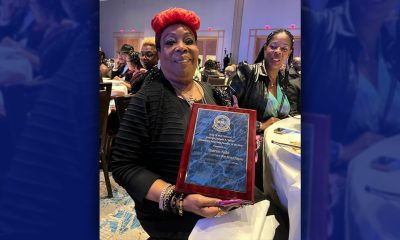
 Activism3 weeks ago
Activism3 weeks agoSharon Kidd Honored by National Law Enforcement Group for Justice, Equity Work
-
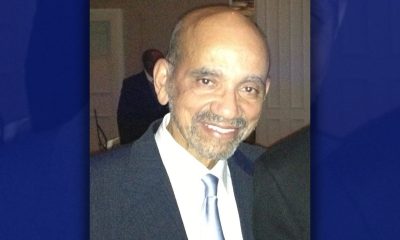
 Activism4 weeks ago
Activism4 weeks agoIN MEMORIAM: Remembering Dr. James Sweeney III — A Life Dedicated to Service
-

 Arts and Culture3 weeks ago
Arts and Culture3 weeks agoBring on the Bands: The Roots of African American Music on Stage at Black-Eyed Pea Festival


